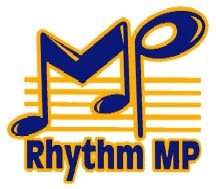
In Preparation For The Theory Examinations Grades 6 to 8
👂♫ Remember to include aural training when teaching theory — ‘hear’ the theory (refer to The ART of Teaching (AoT) for suggested ideas and keep the ideas ‘alive’). 🎹
Editor/Author: Lee Ching Ching
Category: Theory
Publisher: Rhythm MP
Order No.: MPI-4001
Bar Code: 9 556811 101371
ISBN-10: 967-985-451-5
ISBN-13: 978 967985451 0
Total Pages: 128
Weight: 500g
Book Size: 225mm X 300mm
Binding: Limp Bound
Description: This book is based on the new ABRSM theory of music syllabus. It had been written specifically along the requirements needed to cover the musical aspects necessary to answer especially the Questions 4 and 5 of the Grade 6 to 8. The outline of this book is designed to be used as a reference for revision after the whole syllabus has been covered thoroughly. The main concern here is to offer only the relevant information made as concise as possible to guide the candidates in their revision for the examination.
- In Preparation For The Theory Examinations Grade 1
- In Preparation For The Theory Examinations Grade 2
- In Preparation For The Theory Examinations Grade 3
- In Preparation For The Theory Examinations Grade 4
- In Preparation For The Theory Examinations Grade 5
- Guidelines on the Instruments of the Orchestra
- 3 IN 1 Concept: Figuring the Bass, Bach's Chorale, Trio Sonata
- Guidelines on Identifying Music Scores Grade 6-8
- Guidelines On History Of Music Grade 6-8
- Guidelines On Technical Terms & Musical Devices Used In Musical Compositions Grade 6-8
- Guidelines on Melody Writing with Exercises Grade 6-8
- Guidelines on Figured Bass with Exercises Grade 6-8
- Guidelines on Harmony Grade 6-8
- Workbook on Harmony Grade 6
- Workbook on Harmony Grade 7
- Workbook on Harmony Grade 8
- An Introduction to 20th Century Music
- An Illustrated Workbook Guide to the Orchestra, Composers and their Music
- An Introductory Workbook Guide to Music Scores
Music is connected in all elements. We cannot isolate a piece to teach without involving any aural awareness, and neither can we teach theory without ‘hearing’ the theory, (e.g. we have to hear the pitch of a sharpened note when we teach the accidental - sharp ‘#’). This cohesive organisation of thoughts and actions will make your lessons invaluable and interesting to your students. With it intertwined together, the lessons becomes ‘alive’ and musically enriching. — The ART of Teaching (AoT)
Let’s move on together for a more ‘MUSICAL’ music education for the new generation. They deserve a better music education than ours!
- Playing Piano Is Fun Book 1
- Playing Piano Is Fun Book 2
- Playing Piano Is Fun Book 3
- Playing Piano Is Fun Book 4
🎹 Everything in music is interconnected. You may play the Musical Moments series for more MAKING CONNECTIONS ideas and activities.
The PROUD little note » A little note's journey to musical awareness
Creative Musical Moments with THEORY PRE-GRADE 1
Classic Musical Moments 1 with THEORY GRADE 1
Classic Musical Moments 2 with THEORY GRADE 2
Classic Musical Moments 3 with THEORY GRADE 3
Classic Musical Moments 4 with THEORY GRADE 4
Classic Musical Moments 5 with THEORY GRADE 5
Baba Nyonya Musical Moments » theory/practical connection
Advanced Baba Nyonya Musical Moments » practical/aural connection
♫ Listen to Inspirations (Winners' Musical Moments for Pianists)
A spin-off from Classic Musical Moments Grade 5 • MPB-1027-05
Get Ready for the next submission and best compositions will be chosen for publication!
Also available from Shop | Faber Music and FM Dealers





.jpg)